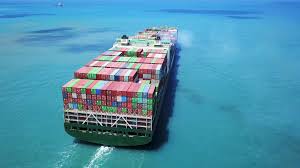Marine Cargo Insurance for Manufacturing Exporters: What You Need to Know
Introduction: The Critical Role of Marine Cargo Insurance in Global Manufacturing
In the complex world of international trade, manufacturing exporters face numerous risks that can potentially derail their business operations. Marine cargo insurance emerges as a critical safeguard, protecting valuable shipments from the moment they leave the factory to their final destination. This comprehensive guide will explore everything manufacturers need to understand about marine cargo insurance, ensuring your international trade remains secure and profitable.
What is Marine Cargo Insurance?
Marine cargo insurance is a specialized type of coverage designed to protect manufacturers and exporters against financial losses arising from damage, theft, or loss of goods during international transportation. Unlike standard shipping insurance, marine cargo insurance offers comprehensive protection across multiple transportation modes, including sea, air, and land.
Key Coverage Elements
- Physical damage to goods
- Theft and pilferage
- Natural disasters and extreme weather conditions
- Accidents during loading, transit, and unloading
- Customs-related risks
Risks Manufacturing Exporters Encounter in International Shipping
Understanding the potential risks is crucial for manufacturers to appreciate the value of marine cargo insurance. These risks extend far beyond simple transportation challenges:
Physical Risks
- Cargo damage from improper handling
- Shipping container accidents
- Seawater damage and corrosion
- Temperature and humidity fluctuations
Geopolitical and Economic Risks
- Political instability in transit countries
- Trade sanctions and export restrictions
- Currency exchange rate fluctuations
- Customs clearance complications
Environmental and Unpredictable Risks
- Hurricanes and tropical storms
- Piracy in high-risk maritime zones
- Cargo vessel accidents and sinkings
- Terrorist activities and cargo hijacking
Types of Marine Cargo Insurance for Manufacturers
Marine cargo insurance isn't a one-size-fits-all solution. Manufacturers can choose from several specialized coverage types:
1. Specific Cargo Insurance
Covers a single shipment with precise terms and conditions. Ideal for manufacturers with infrequent or unique export requirements.
2. Open Cargo Insurance
Provides continuous coverage for multiple shipments over a specified period. Perfect for manufacturers with regular international trade activities.
3. All Risk Coverage
Comprehensive protection against most potential shipping risks, offering the broadest possible protection for manufacturers.
4. Named Perils Coverage
Protects against specifically listed risks, often at a lower premium but with more limited protection.
Calculating Marine Cargo Insurance Value
Determining the right insurance coverage involves several critical considerations:
Valuation Methods
- Cost, Insurance, and Freight (CIF) Value: Total shipment value including product cost, insurance, and freight charges
- Invoice Value: The declared value of goods being shipped
- Replacement Cost: Expense of replacing goods if completely lost
Factors Affecting Premium
- Cargo type and fragility
- Transportation mode
- Destination country and route risk profile
- Packaging and handling methods
- Historical loss records
Best Practices for Marine Cargo Insurance Management
- Conduct thorough risk assessments before each shipment
- Maintain detailed inventory and documentation
- Use high-quality packaging and secure transportation methods
- Regularly review and update insurance coverage
- Work with experienced marine insurance brokers
- Implement robust tracking and monitoring systems
Understanding Marine Cargo Insurance Exclusions
Not all risks are covered. Manufacturers must be aware of common exclusions:
- Intentional damage
- Normal wear and tear
- Improper packaging
- Inherent vice (natural deterioration)
- Delays and consequential losses
- Nuclear incidents and war risks
Navigating the Marine Cargo Insurance Claim Process
Step-by-Step Claim Procedure
- Immediate damage documentation
- Notify insurer within specified timeframe
- Provide comprehensive evidence
- Cooperate with insurance investigation
- Submit detailed claim documentation
Pro Tip: Maintain meticulous records of all shipments, including photographs, packaging details, and transportation logs to expedite potential claims.
Conclusion: Protecting Your Global Manufacturing Investments
Marine cargo insurance represents more than just a financial safeguard—it's a strategic tool for managing international trade risks. By understanding coverage options, implementing best practices, and working with experienced insurers, manufacturers can confidently expand their global reach.
Frequently Asked Questions
- How much does marine cargo insurance cost?
- Costs vary between 0.5% to 3% of the total shipment value, depending on risk factors.
- Is marine cargo insurance mandatory?
- While not always legally required, it's strongly recommended for international trade.
- How long does marine cargo insurance coverage last?
- Coverage typically extends from the point of origin to the final destination, including storage and transit periods.


 0330 127 2333
0330 127 2333
